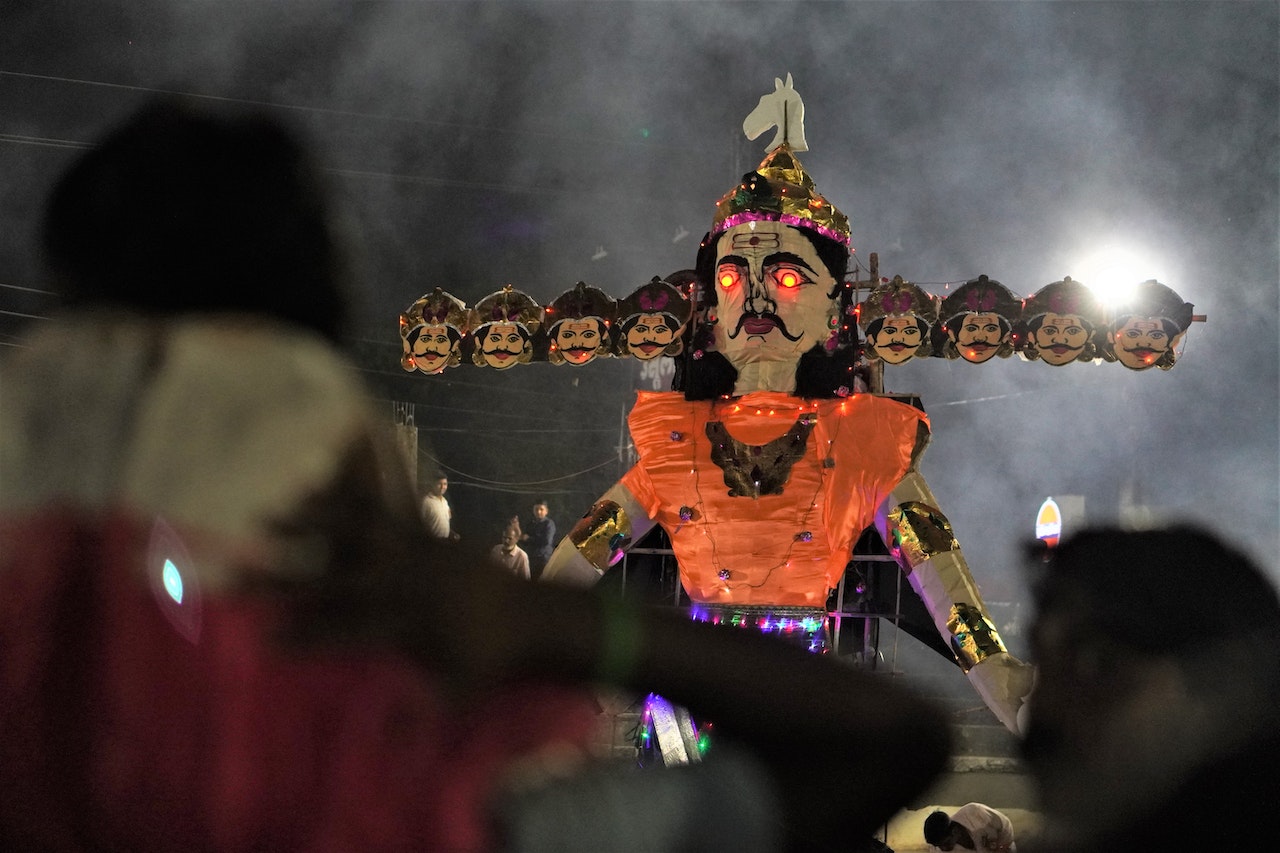Dussehra, also known as Vijayadashami, is a prominent Hindu festival celebrated in India and other parts of the world with great enthusiasm and fervor. It holds immense significance in the Hindu calendar and marks the triumph of good over evil. This 1500-word content will explore the history, mythology, cultural significance, and celebration of Dussehra.
Introduction to Dussehra
Dussehra, which falls on the tenth day of the Hindu month of Ashwin, typically in September or October, is one of the most celebrated festivals in India. It marks the end of the Navratri festival, a nine-day period of fasting, prayer, and devotion dedicated to the goddess Durga. Dussehra also coincides with the conclusion of the Sharad Navratri and the beginning of the festive season in India, which includes Diwali.
Historical and Mythological Significance
The celebration of Dussehra has both historical and mythological significance. One of the most well-known stories associated with Dussehra is the victory of Lord Rama over the demon king Ravana. According to the epic Ramayana, Lord Rama, with the help of his devoted monkey-god Hanuman and his army, defeated the ten-headed demon king Ravana and rescued his wife, Sita. This epic battle between good and evil, truth and falsehood, is a central theme of Dussehra.
The Legend of Lord Rama
The legend of Lord Rama and Ravana provides deep moral and ethical lessons. Ravana, despite being a learned and accomplished king, was overcome by his ego and desire for power, which ultimately led to his downfall. Lord Rama, on the other hand, represents righteousness, duty, and the victory of virtue over vice. The celebration of Dussehra symbolizes the ultimate triumph of good over evil.
Lord Rama’s Return to Ayodhya
Another key event associated with Dussehra is Lord Rama’s return to Ayodhya after his 14-year exile. The people of Ayodhya celebrated his return by lighting lamps and decorating the entire city. This tradition is still observed during Diwali, which is celebrated a few weeks after Dussehra. The lighting of lamps during Diwali signifies the victory of light (knowledge, wisdom, and goodness) over darkness (ignorance and evil).
Celebration of Dussehra
Dussehra is celebrated in various ways across India, each region adding its own cultural flavor to the festival. Here are some of the most common ways Dussehra is celebrated:
1. Ram Lila Performances:
One of the most popular and theatrical ways of celebrating Dussehra is through Ram Lila performances. These are elaborate stage plays that reenact the life of Lord Rama, his battle with Ravana, and his eventual victory. These performances are held in towns and cities across India, and the grand finale features the burning of huge effigies of Ravana, his brother Kumbhakarna, and his son Meghnad. The crowd cheers as the effigies go up in flames, symbolizing the destruction of evil.
2. Worship of the Goddess Durga:
In some parts of India, Dussehra is primarily a celebration of the goddess Durga. In West Bengal, for example, Dussehra is known as Durga Puja, and the festival marks the victory of the goddess over the buffalo demon Mahishasura. Elaborate idols of the goddess are created and worshipped during this time, and the festival culminates with the immersion of these idols in rivers and ponds.
3. Ayudha Puja:
In South India, Dussehra is also celebrated as Ayudha Puja, where people worship their tools and instruments. This is a way of showing gratitude to the tools that help in their livelihood. Vehicles, machinery, and even computers are decorated and worshipped on this day.
4. Victory Processions:
In some regions, particularly in the northern parts of India, processions are organized to mark the victory of Lord Rama. Idols of Lord Rama, Sita, Lakshmana, and Hanuman are carried through the streets in grand processions, accompanied by music and dance. These processions are a sight to behold and draw large crowds.
5. Cultural Programs:
Many cultural programs and events take place during Dussehra, such as dance performances, music concerts, and art exhibitions. These events showcase the rich cultural heritage of India and bring people together in the spirit of celebration.
6. Giving to the Needy:
Dussehra is also a time for acts of charity and giving to the less fortunate. Many people distribute food, clothing, and other essentials to those in need, embodying the spirit of sharing and caring.
7. Cleaning and Renovation:
It is a tradition to clean and renovate homes and workplaces during Dussehra. This symbolizes the removal of impurities, both physical and spiritual, and the welcoming of positivity into one’s life.
Conclusion: The Significance of Dussehra
Dussehra is a festival that unites people in the celebration of good over evil, righteousness over wickedness, and knowledge over ignorance. It transcends religious boundaries and is celebrated with great fervor by people of all backgrounds. It reminds us of the importance of staying on the path of truth and virtue, even in the face of adversity and challenges.
The story of Lord Rama and his victory over Ravana, as well as the return to Ayodhya, serves as a timeless reminder of the power of righteousness and the inevitable downfall of evil. Dussehra encourages us to reflect on our own actions, motivations, and choices and to strive for a life that upholds the values of honesty, integrity, and compassion.
In the modern context, Dussehra also emphasizes the need to overcome the “Ravanas” of our time, such as corruption, discrimination, and social injustices. As the effigies of Ravana go up in flames, it is a symbol of our collective resolve to combat these contemporary evils and build a better, more just society.
As we celebrate Dussehra, let us not only enjoy the festivities but also take the opportunity to reflect on the timeless wisdom it imparts and to strive for a world where goodness and truth always triumph over darkness and deceit. Dussehra is not just a festival; it is a celebration of the enduring human spirit and the triumph of righteousness in an often challenging world.
